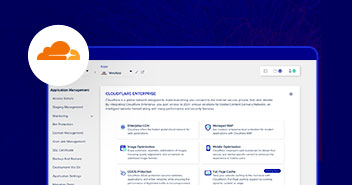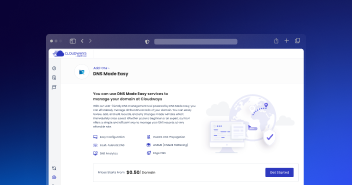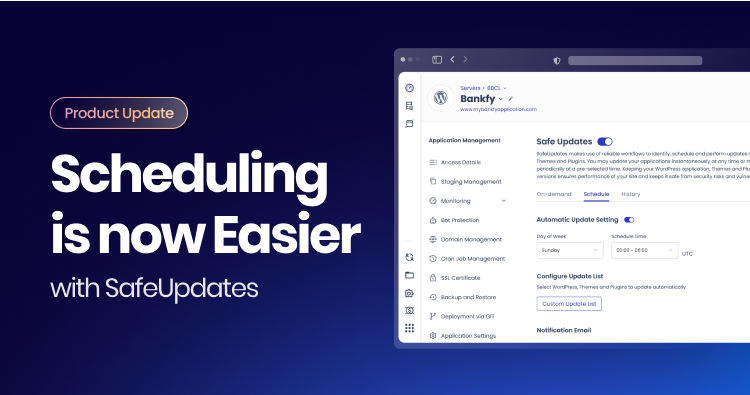
When you’re looking for a new hosting plan it can be hard to directly compare providers. To help you out, we recently tested some of our DigitalOcean plans against Kinsta and WPEngine. Just by working out which of our plans to line up against theirs, we saw how hard it can be.
Different providers reveal different details about the servers they offer. Some plans have caps or limits – e.g. on visitors per month, or sites per server – that you don’t see elsewhere. It’s tempting to assume that similar prices mean similar plans, but this isn’t always true.
This article takes you through some ways of comparing us to our competition. We hope it will help if you have a few different “Plans and pricing” tabs open right now.
Method #1 for comparing hosting plans: Look at the numbers
Different hosting providers give you different sets of numbers about their plans, but some comparisons are always possible. It’s useful to know which figures represent technical specifications, and which ones don’t.
Some figures look like technical specifications, but aren’t
- “Visits per month” isn’t a tech spec – it’s a pricing bracket. Some providers cap their plans at a particular number of site visits per month. This isn’t about server capacity. It’s a reason to bump up your bills as you attract traffic, even if your websites are lean and easy for the server to handle. It’s not as objective as it sounds, either. Just ask how they count “visits” and you’ll see how much of a grey area this is.
- “Up to X sites (or CMS installations)” isn’t a tech spec – it’s customer segmentation. You might have a one 40GB website or ten 4GB websites. When it comes to storage space, it’s all just data. Some hosting plans limit you to a certain number of sites (or WordPress installations) but this is not a technical constraint. Usually it’s a way for hosting providers to segment their customers and charge some of them more. If you’re an agency running a large number of client websites, you’re the target.
- “Concurrent visitors” isn’t a tech spec, but it is important. How many people can visit your site at one time before it fails? This is important to know, but it depends on a lot of things. How heavy is your website? How much of it is cached for quick access? How hard does your server need to work for each visitor? And what do you mean by “fail”? We’ll talk more about this soon.
Technical specifications to look for
Some raw numbers help you to directly compare servers. Look for:
- Terabytes (TB) or gigabytes (GB) of storage. This is the amount of information that your server can hold. It’s the space for all your website content, data your site collects (like customer information), and the tech stack that underpins it all (e.g. PHP and WordPress installations). If you get close to this limit, your server can slow down. Look at the units closely, because 1TB = 1,000GB.
- GB of RAM. This affects how quickly your server can operate. With more RAM, operations are quicker.
- Number of processors or “cores”. Every processor can do one thing at a time, so this tells you whether your server can multitask. With one core, every request is queued up and served one-by-one. A dual-core server works through two queues at the same time, and so on.
- GB or TB of bandwidth. This is the total amount of data you can send out to the internet in a month. It’s not a technical limitation of the server (exceeding it is more likely to cost you money rather than slow your site down), but it’s an objective number that you’ll see on almost every hosting plan you find. In some cases bandwidth limits apply to the CDN rather than the server.
Remember that different providers will share different sets of specifications, so you might not find all the numbers you want. But do use whatever numbers you find to build a picture of each plan.
One number you almost never see
For a lot of people, the biggest questions is “how many people will be able to visit my site before my server crashes from the load”? Unfortunately, that’s not always an easy one to answer. But heaping on more and more concurrent visitors will eventually lead to failure, which brings us to real-world testing.
Method #2 for comparing hosting plans: Test results
The basic process that we followed for our most recent benchmarking against Kinsta and WPEngine was:
- Set up servers to test. For our testing we used servers that weren’t receiving any traffic from the outside world and hosted mock websites (including realistically weighted content) running on common tech stacks.
- Send a calibrated number of requests to the server. From the server’s point of view each request is the equivalent of a person visiting the site.
- Measure the response time, i.e. how long each ‘visitor’ waits for the site to load.
- Increase the number of visitors and keep measuring until you reach the point of failure.
In this case. ‘failure’ is when the server slows down to the point of frustration. Our test methodology defined failure as an average response time over 2.5 seconds.
Tests like this show how servers work under real(ish) conditions. The results from our test of Cloudways, Kinsta and WPEngine plans reveal that you can’t use price to predict performance. Even you can check out the detailed comparison of WPEngine with Cloudways and learn why Cloudways is the #1 WPEngine alternatives in 2021.
Method #3 for comparing hosting plans: Price (but prepare to be surprised)
Do similar prices mean similar plans? Maybe sometimes, but not when Cloudways is in the mix.
For example, look at the ‘Agency’ tier in our testing. Kinsta and WPEngine’s plans are very close in a lot of ways. Also see Kinsta alternative
| Comparing | Monthly Cost | Storage | Bandwidth | Visits | Sites |
|---|---|---|---|---|---|
| Kinsta “Business 3” plan | $300 | 50GB | 500GB (CDN bandwidth) | 400,000 | 20 |
| WPEngine “Growth” plan | $290 | 50GB | 500GB | 400,000 | 30 |
Similar price tags, similar specs.
So which Cloudways plan did we benchmark against these two in our latest testing? In terms of price, Our closest DigitalOcean plan costs $315/month but comes with 16x more bandwidth (8TB) and nearly 20x the storage (960GB). Even moving Cloudways down to $230/month is still an unfair fight, with 640GB of storage and 7TB of bandwidth.
The Cloudways plan that we benchmarked against the $300 competition costs $135/month. Even after we’ve conceded more than half the cost, the tech specs are still in our favour. But at least we’re in the same ballpark.
| Monthly Cost | Storage | Bandwidth | Visits | Sites | |
|---|---|---|---|---|---|
| Cloudways DigitalOcean | $135 | 320GB | 6TB | No limit | No limit |
So, which is fastest out of plans costing $300, $290 plan, and $135? The results speak for themselves, and they’re not good for big spenders.
At other tiers we’re charging less than half of what Kinsta and WPEngine do. For small businesses we successfully put a $42 challenger up against $100-$115 competition. And our $10 entry-level plan ran rings around $25 and $30 plans.
After you’ve compared specs, looked at test data and compared prices there’s still one sure-fire way to discover what you’ll get when you sign up for a new hosting package. Every new Cloudways customer gets a free trial – three days to set up a few sites and see how they perform, and to see how easy we make hosting management.
You’ve just read some compelling reasons to get started, and now you know that there’s nothing to lose. Today could be the day you discover how quickly your websites can run on the Cloudways Platform.
Max Johns
Max is Cloudways' Director of Content. Based in New Zealand, he is a digital content strategist with experience in markets from software to higher education. He has spoken at industry conferences in Australasia, America and Africa. When he's away from screens he can be found with his young family walking in New Zealand's native bush, or helping out at his local toy library.


